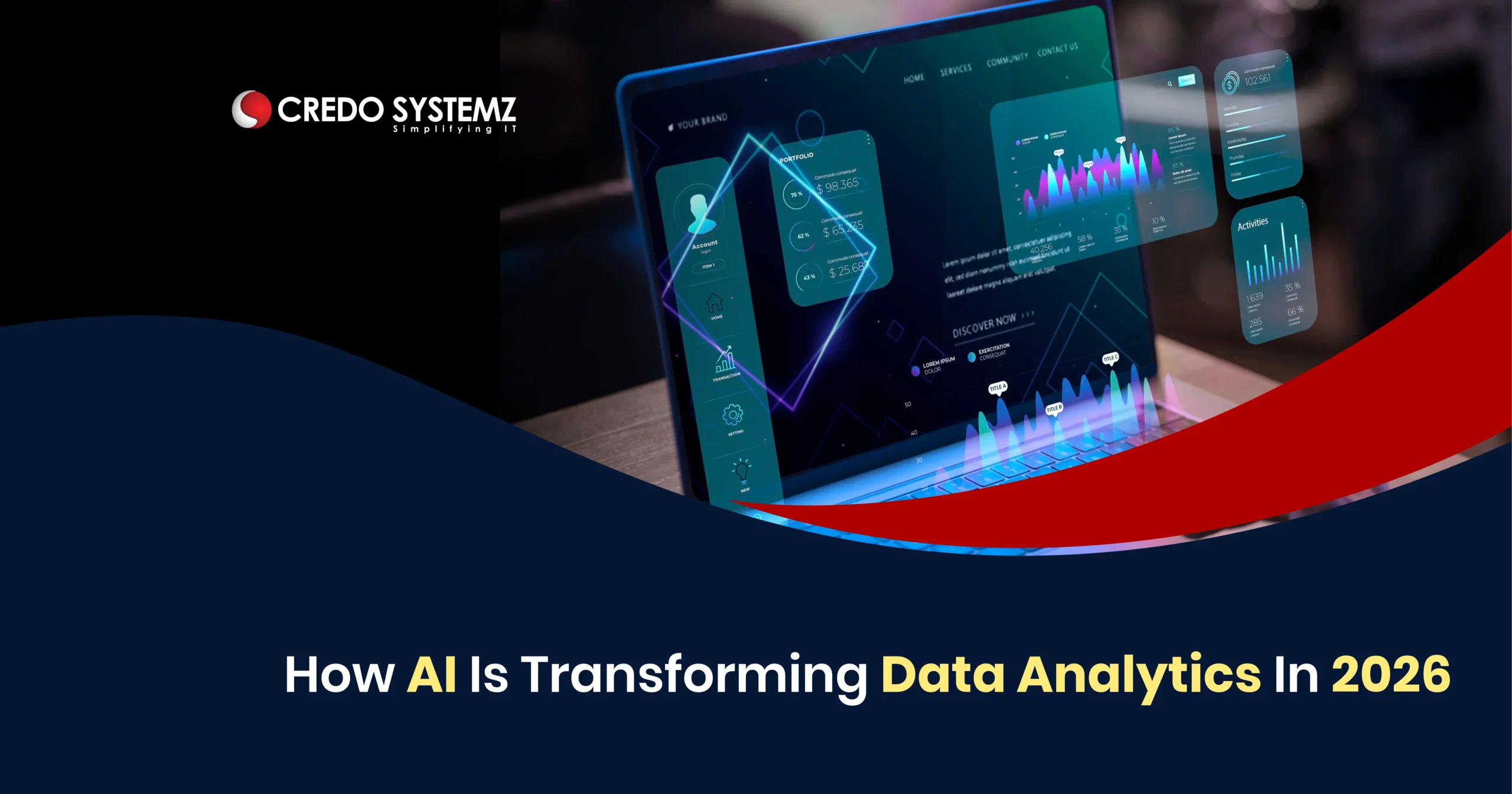
How AI Is Transforming Data Analytics in 2026
By 2026, AI will become the engine in data analytics that reshapes what analytics can answer, who can ask those questions, and how fast insights appear. Let’s explore the practical changes across platforms, teams, and products in data analytics.
From dashboards to natural-language insight (LLMs + RAG)
Large language models (LLMs) are not chatbots, they are more of an analytics stack. Modern analytics tools accept natural-language questions and can:
- Generate context-aware queries
- Synthesize results into plain-English explanations
- Visual summaries
Retrieval-augmented generation (RAG) connects LLMs to the organization’s data, metadata and can answer based on the facts. This is reshaping workflows for analysts and business users. LLMs + RAG can speed hypothesis testing and reduce the handoffs between business and data teams.
Agentic AI and automated workflows
AI agents are embedded in analytics apps which are autonomous chains of models that can take actions, orchestrate queries, run jobs, and close the loop.
Enterprises are rapidly experimenting with task-specific agents that automate repetitive analytics tasks. These agents can monitor data, surface issues, and notify owners automatically.
Multi-modal analytics: images, audio, text, sensors — together
Analytics platforms fuse tabular data with documents, transcripts, images, and sensor streams. Multi-modal LLMs allow users to ask questions that cross these formats. This enables new forms of root-cause analysis and product feedback loops.
Multi-modal analytics is useful for retail, manufacturing, insurance, as it ensures more actionable insights.
Data + AI observability — reliability as a first-class concern
With AI, teams must observe model outputs, prompt drift, and hallucination rates along with data quality. In 2026 data + AI observability will ensure analytics remain trustworthy as underlying models and prompts evolve.
Democratization — self-service
AI is accelerating the democratization of analytics as analysts can generate sophisticated queries and receive contextual insights without relying on central BI teams. Organizations are embedding governance to access controls, model validation, and prompt auditing. This balance of empowerment + control is a major theme for 2026.
Skills & team changes
AI changes roles as analysts become prompt-savvy storytellers. Data engineers focus more on pipelines, feature stores, and observability. ML engineers concentrate on safe model deployment and monitoring. Analytics teams prioritize upskilling in LLM prompting, data governance, and model observability.
Main challenges to watch
The major challenges involved in AI with data analytics are:
- Hallucinations & trust: LLM-generated explanations can be wrong that need governance, RAG, and human-in-the-loop checks.
- Bias & fairness: automated analyses require audits to prevent systemic bias in decisions.
- Skill gaps: organizations need training programs for analysts, ops, and leadership to adopt AI effectively. Credo Systemz is the best training platform that offers AI in data analytics training in Chennai to learn about RAG+LLM, data + AI observability and other AI features.
Want to know more about the course curriculum, career counseling, or video references? Just ping us on WhatsApp!
Conclusion
Finally, analytics is an automated, conversational layer that combines your data, models, and business processes. Teams that have strong data foundations with governance, observability, and skill development will get the biggest payoff. The transformation is visible in the vendor roadmaps, analyst forecasts, and enterprise results from 2025–2026.

Join Credo Systemz Software Courses in Chennai at Credo Systemz OMR, Credo Systemz Velachery to kick-start or uplift your career path.
